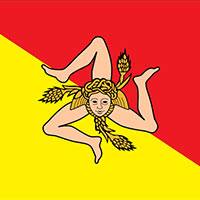Erice (Eryx)
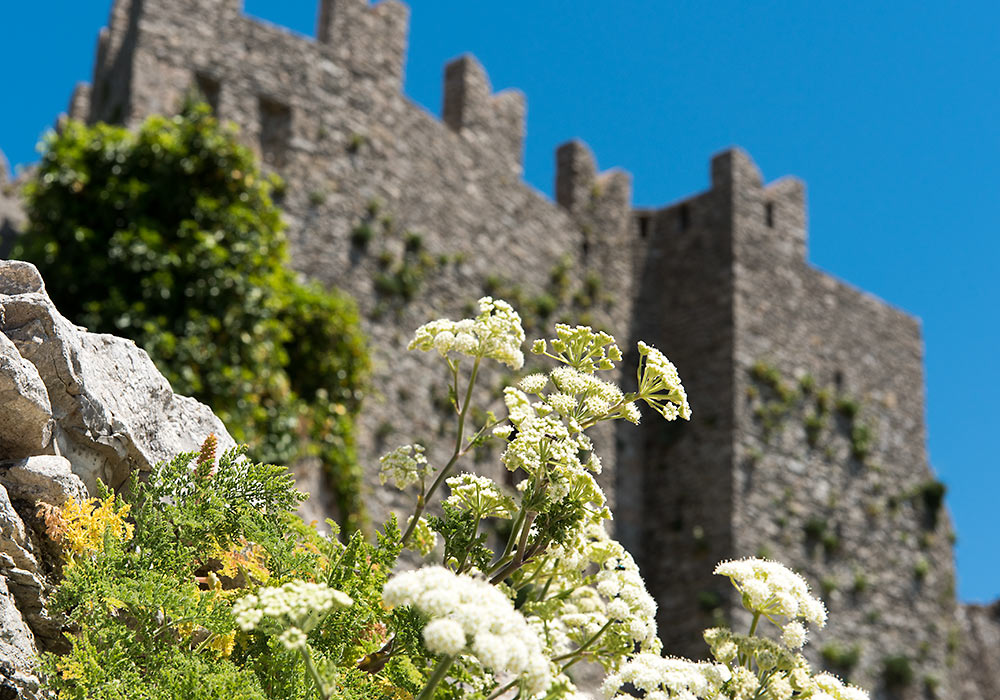
The Norman castle in Erice.
Eryx was founded by the Elymians, an ancient people with their own - not yet deciphered - language. The Elymians inhabited the western part of Sicily during the Bronze Age and Classical antiquity. The Elymi shared western Sicily with the Sicani, the Phoenicians, and later the Greeks. Their three most important cities were Segesta, the political centre; Eryx (the modern Erice), a religious centre; and Entella. Other cities were Elima, Halyciae (referred to as Alicia in modern Italian sources), Iaitas, Hypana, and Drepanon.
Erice (Eryx) was well known in ancient times for the temple of Venus Erycina, the goddess of fertility. It was the Sicans who set up an altar to Venus Erycina, and the sanctuary was much frequented during the Elymian and Phoenician period, according to the Blue Guide Sicily.
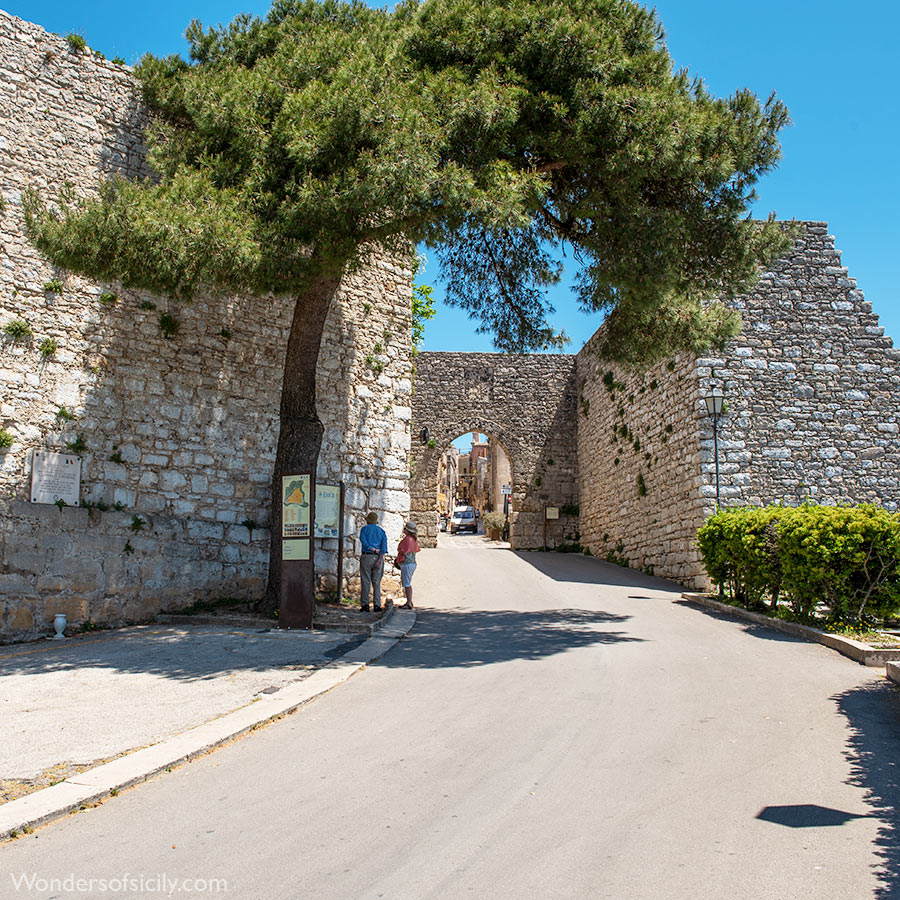
Entering Erice.
According to the city information at the Sanctuary of the Venus of Erice, a Phoenician dedication to the goddess Astarte has been found in Erice, as well as a Greek inscription to Aphrodite and fragments of one in Latin to Venus - three divinities sharing the same identity.
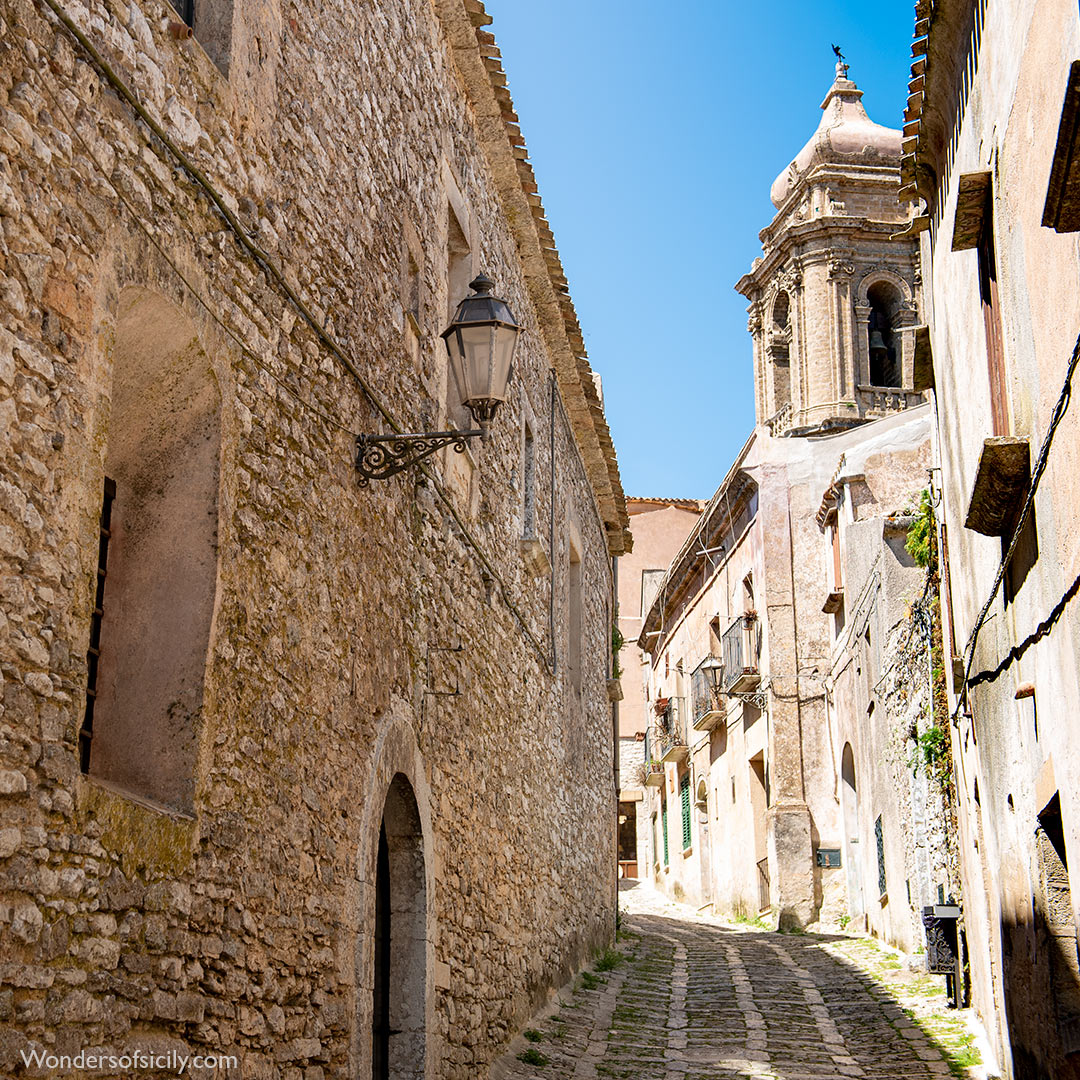
A narrow street in Erice. The narrow medieval streets of Erice offer a captivating glimpse into urban design from centuries past. Their labyrinthine layout, bordered by timeworn stone facades preserves a tangible connection to history that continues to intrigue visitors.
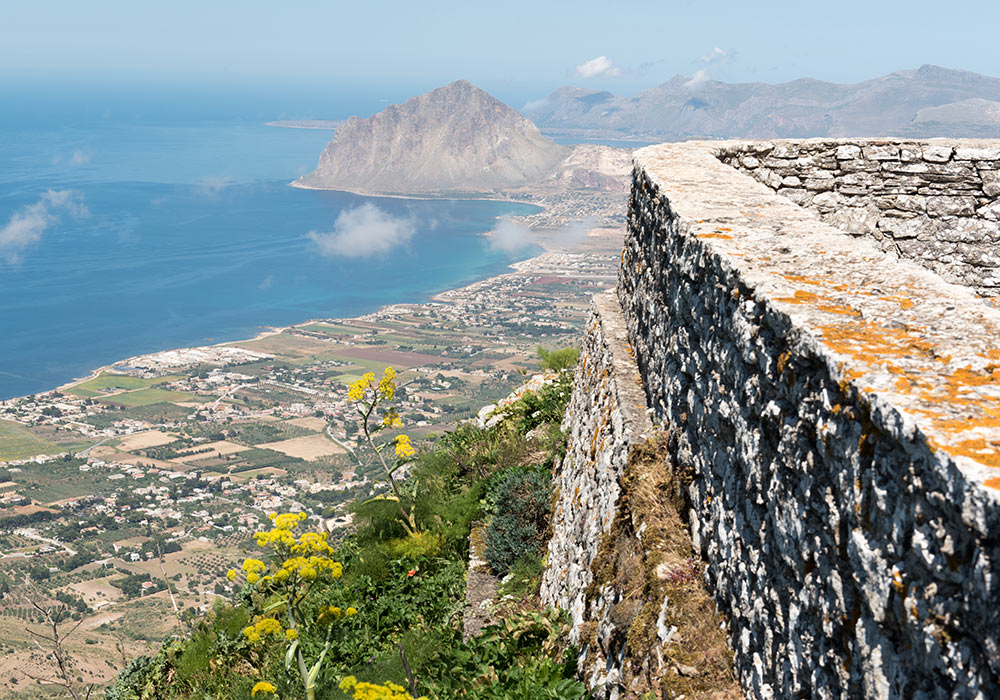
Erice, situated on top of Mt San Guiliano (751m), offers breathtaking views towards Trapani and the the salt-pans outside the city and - as here - towards Mount Cofano.
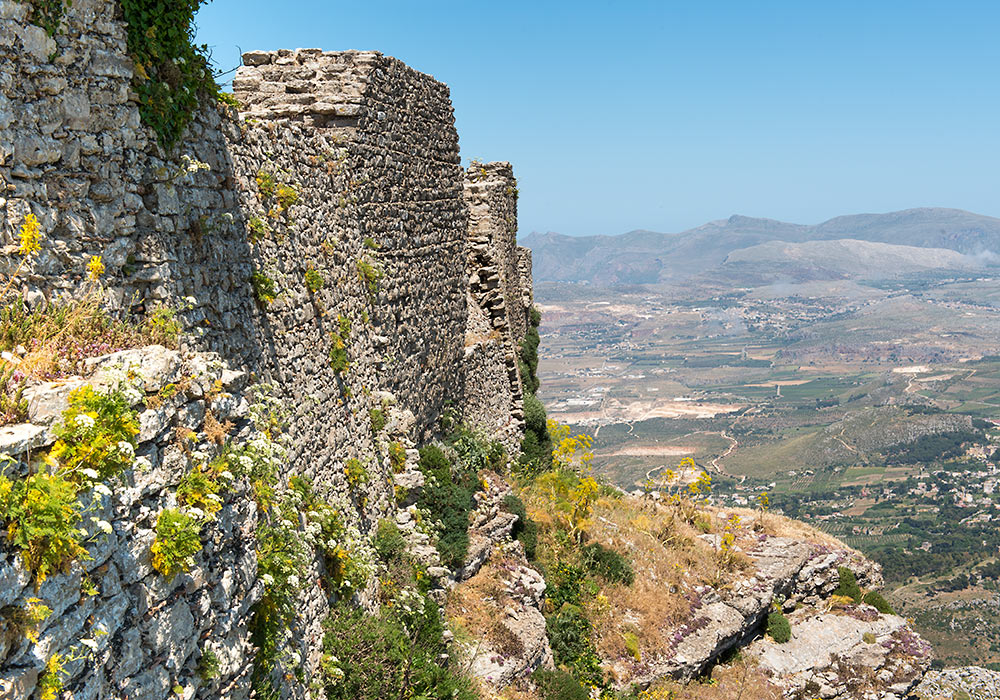
The impressive defensive walls protecting Erice.
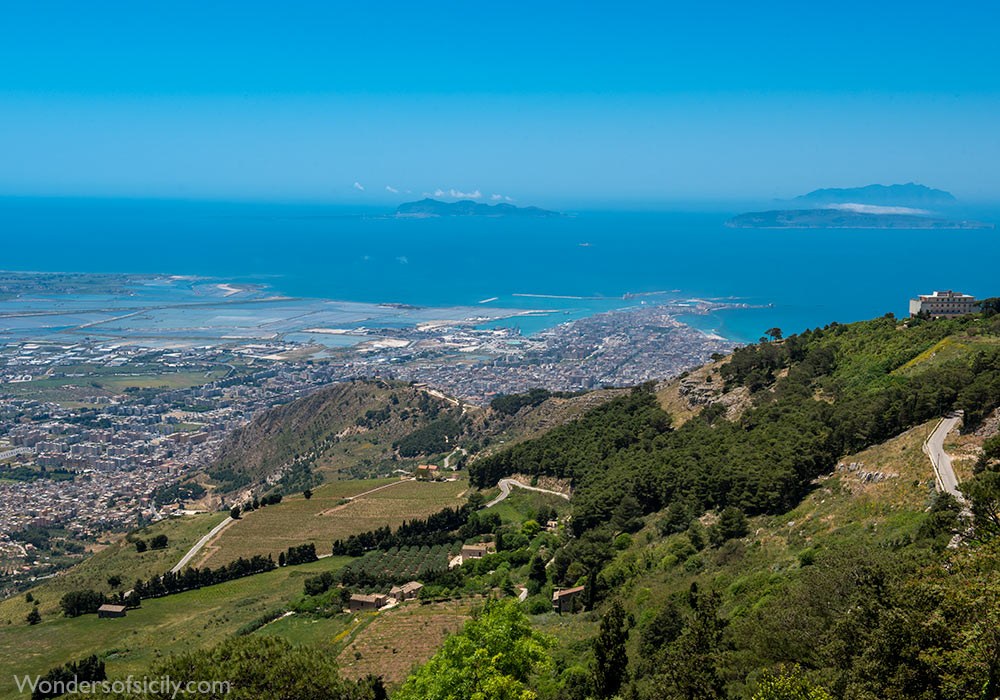
The view from Erice is spectacular, and you can see the Aegadian islands Favignana, Levanzo and Marettimo.
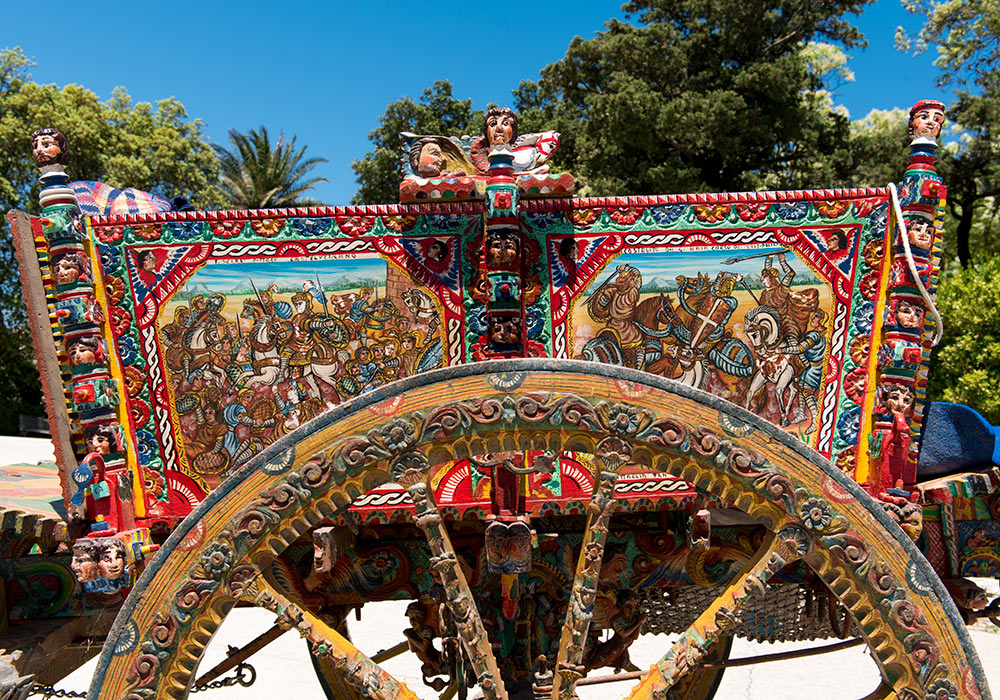
Colourful Sicilian cart in Erice.
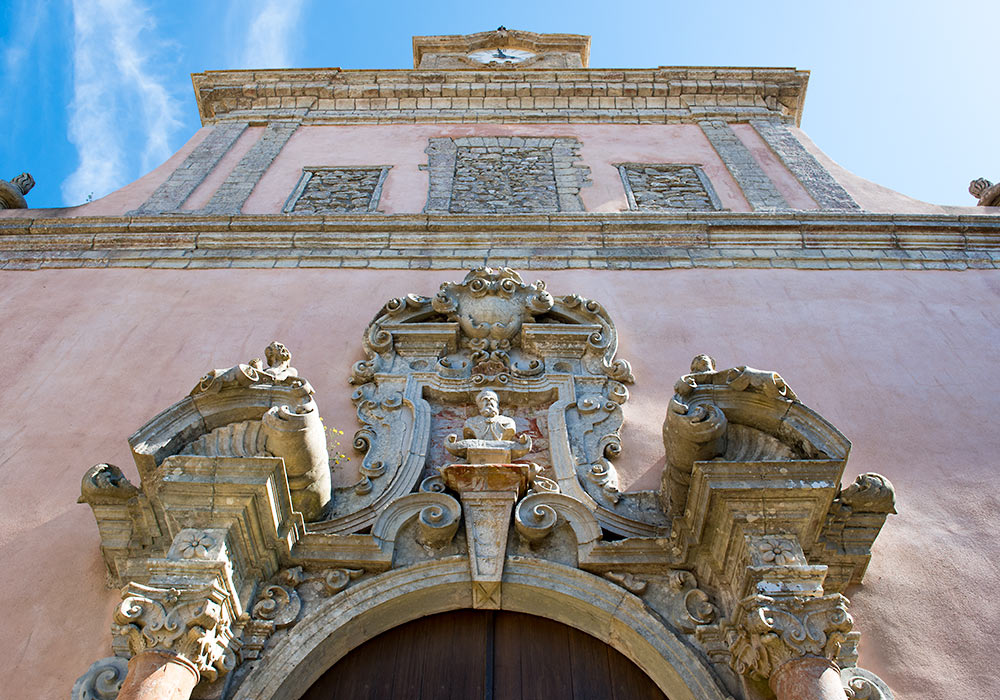
Detail of the Baroque doorway of the church of S Martino (14th-19th century)
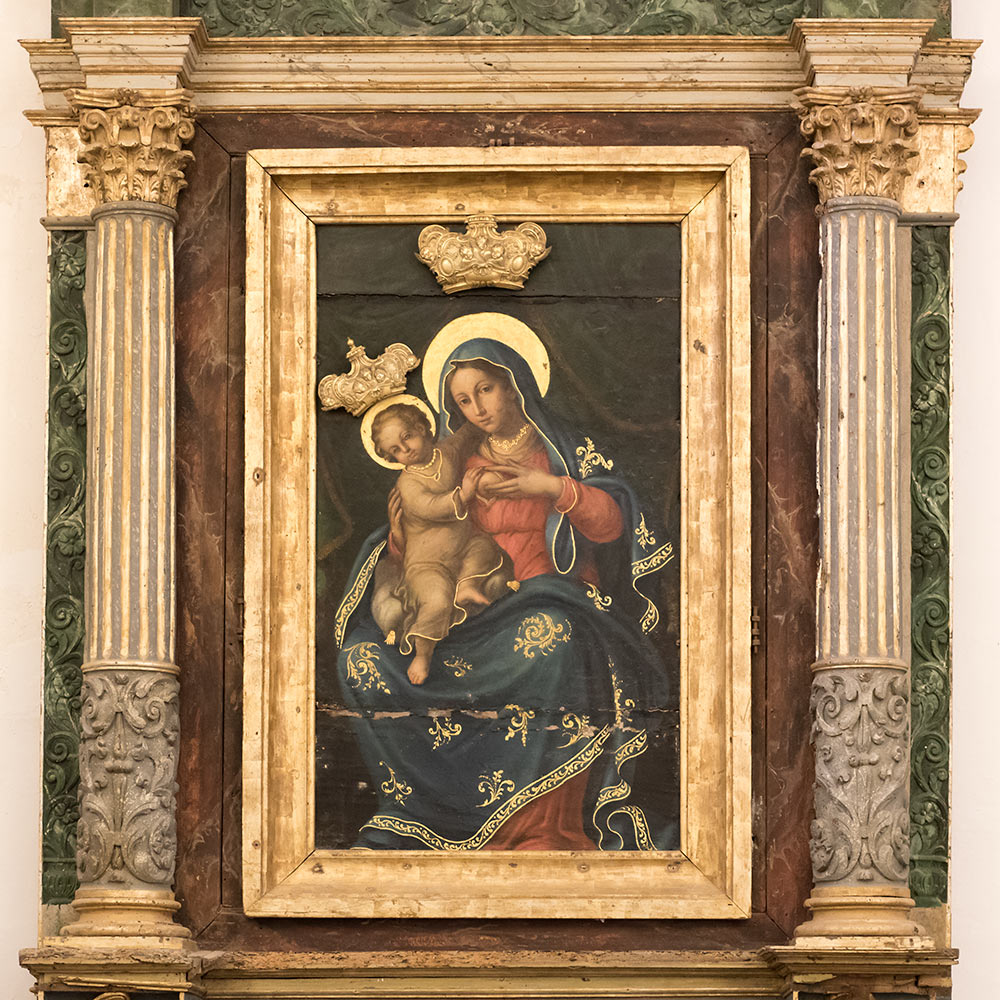
The Nursing Madonna (Virgo Lactans aka Madonna Lactans) in the church of S Martino, Erice.
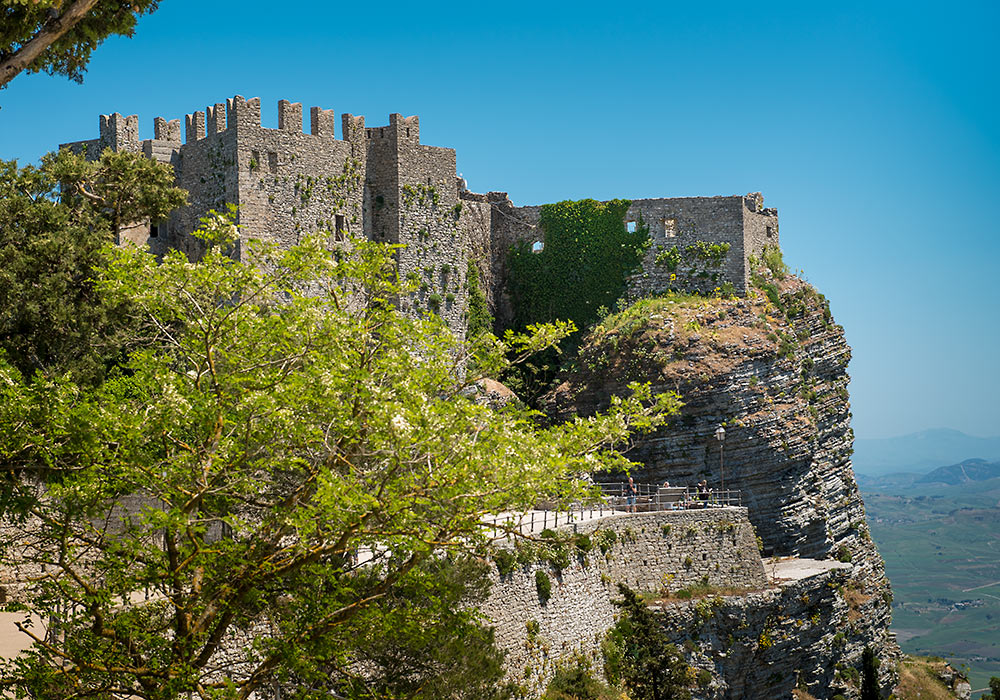
The Norman castle in Erice.
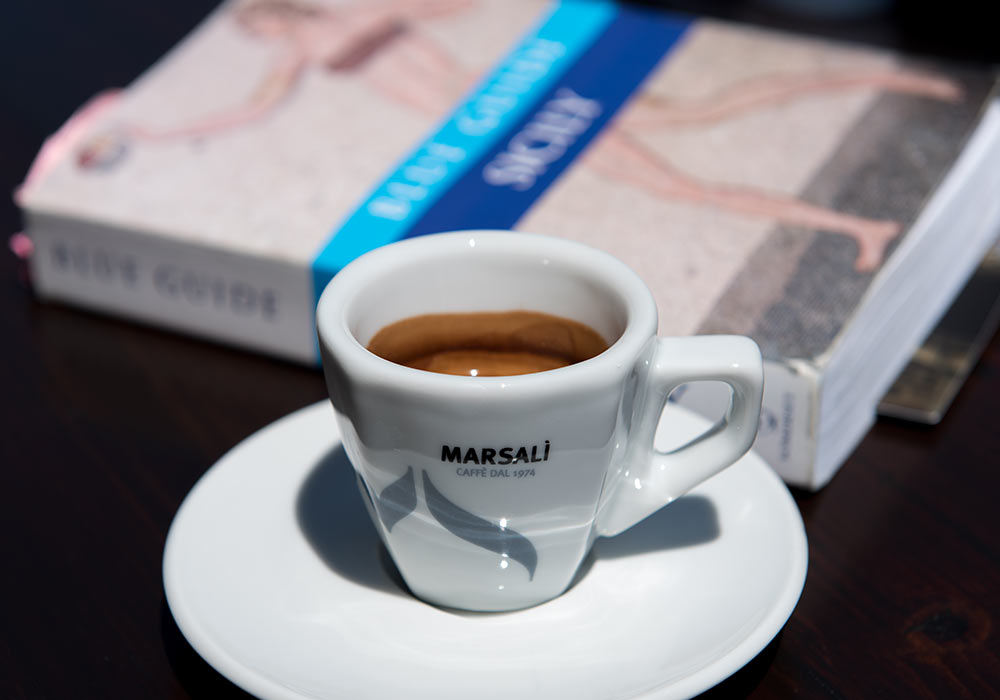
And now for something completely different: An espresso!
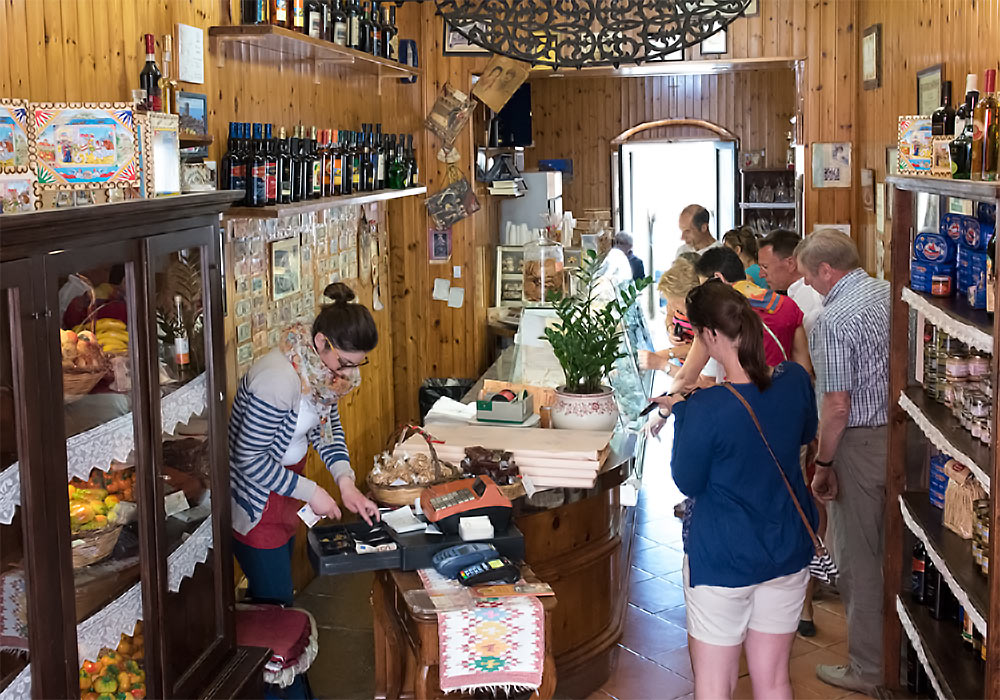
La Pasticceria Maria Grammatico di Maria Grammatico in Via Vittorio Emanuele 14, Erice (TP).
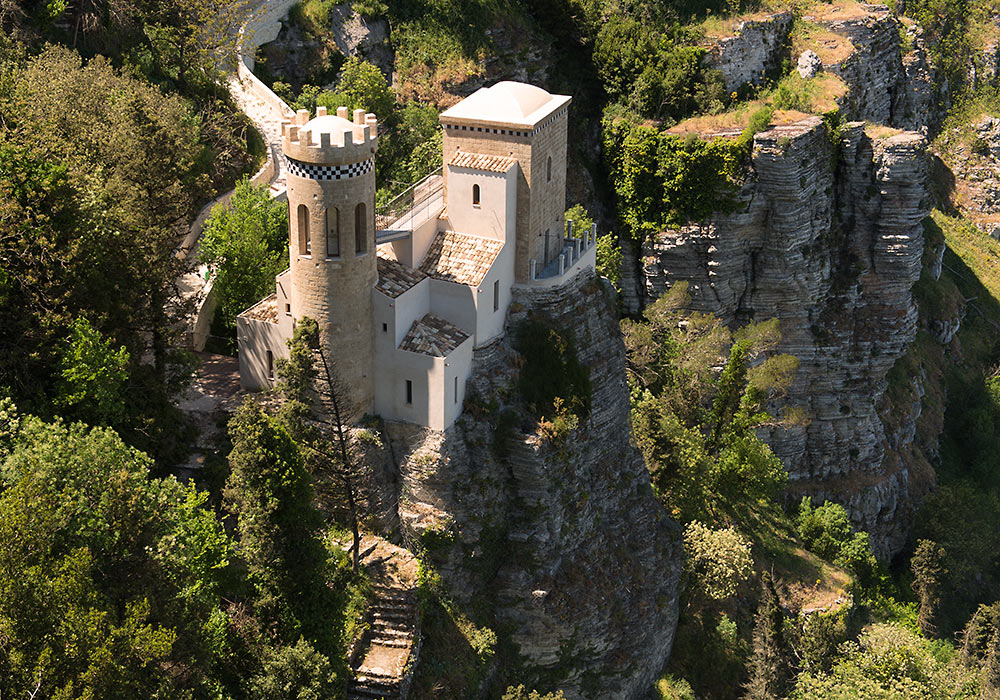
Count Agostino Pepoli's neo-Gothic Torretta (late 19th Century).
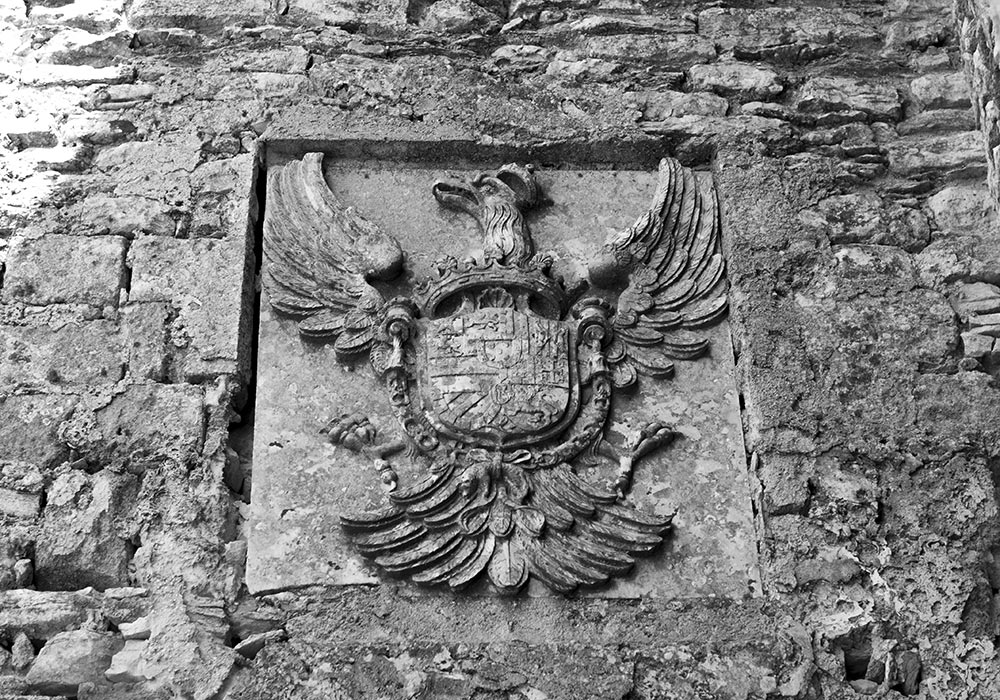
The shield of Philip II, king of Castile, and the Crown of Aragon.
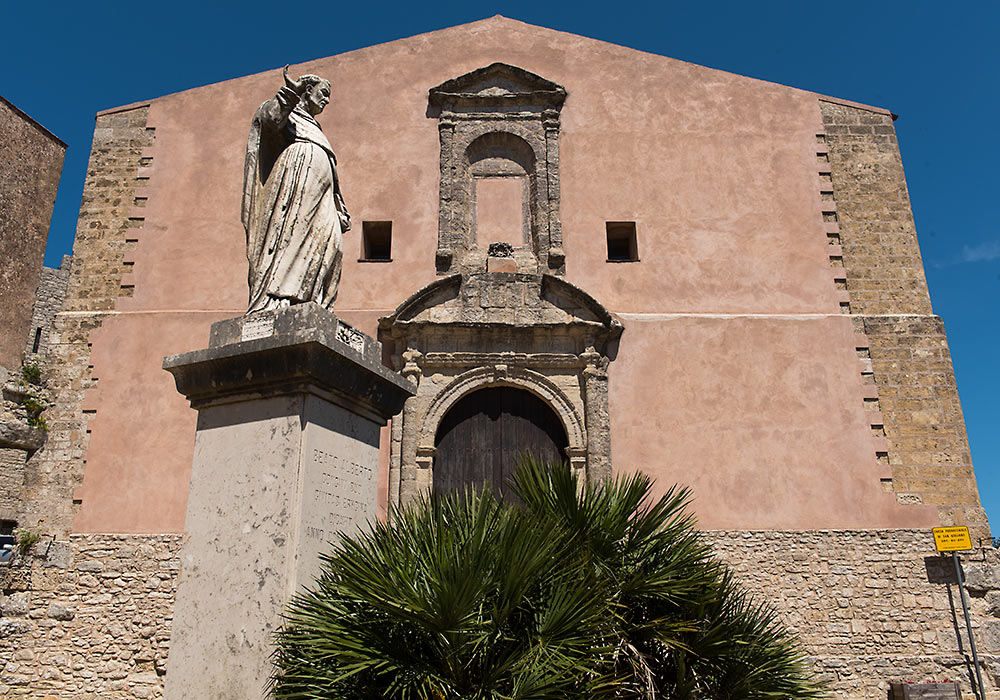
The statue of the Blessed Albert (Beato Alberto) of Trapani in front of the church of San Giuliano (Chiesa parrocchiale di San Giuliano, deconsecrated), 12th-17th century.
Saint Albert of Trapani (~1240–1307) is the patron saint of Messina, Trapani, Erice, Palermo, and Mantua, as well as of the Carmelites, coopers, and those seeking protection against possession and infertility. He is also invoked during childbirth difficulties and fevers.
Saint Albert degli Abbati [Albertus Siculus] was born around 1240 (some sources suggest 1212) in Trapani into a noble Florentine family. His parents, who were childless and advanced in age, vowed to dedicate a son to Our Lady of Mount Carmel. As a young boy, Albert entered the Carmelite Order (Ordo Fratrum Beatae Mariae Virginis de Monte Carmelo – OCarm) at their monastery in his hometown, located on Monte Trapani.
After his ordination, he was stationed at the Carmelite monastery in nearby Messina, where he devoted himself to the conversion of Jews. He gained renown for his preaching, missionary work, and the miracles associated with him. Between 1280 and 1289, he returned to Trapani and became provincial of Sicily in 1296. He spent his final years as a hermit near Messina, where he died reputedly on 7 August 1307 (possibly 1306). His biography, however, is late and contains several implausible and dubious details.
Although he was never formally canonized, his cult was approved on May 31, 1476, by Pope Sixtus IV (1471–1484). His feast day is 7 August, and his name is included in the Martyrologium Romanum. His tomb is in Messina; Trapani holds his head, and other relics are distributed among several Italian cities. He is often depicted in the Carmelite habit with a book (representing the Rule), a crucifix with lilies (symbolizing chastity), a rosary, and claw-like marks under his cloak, alluding to the devil's temptations. A chained devil symbolizes an exorcism he performed on a possessed girl. Saints Teresa of Ávila and Mary Magdalene de' Pazzi were among the many saints particularly devoted to him.
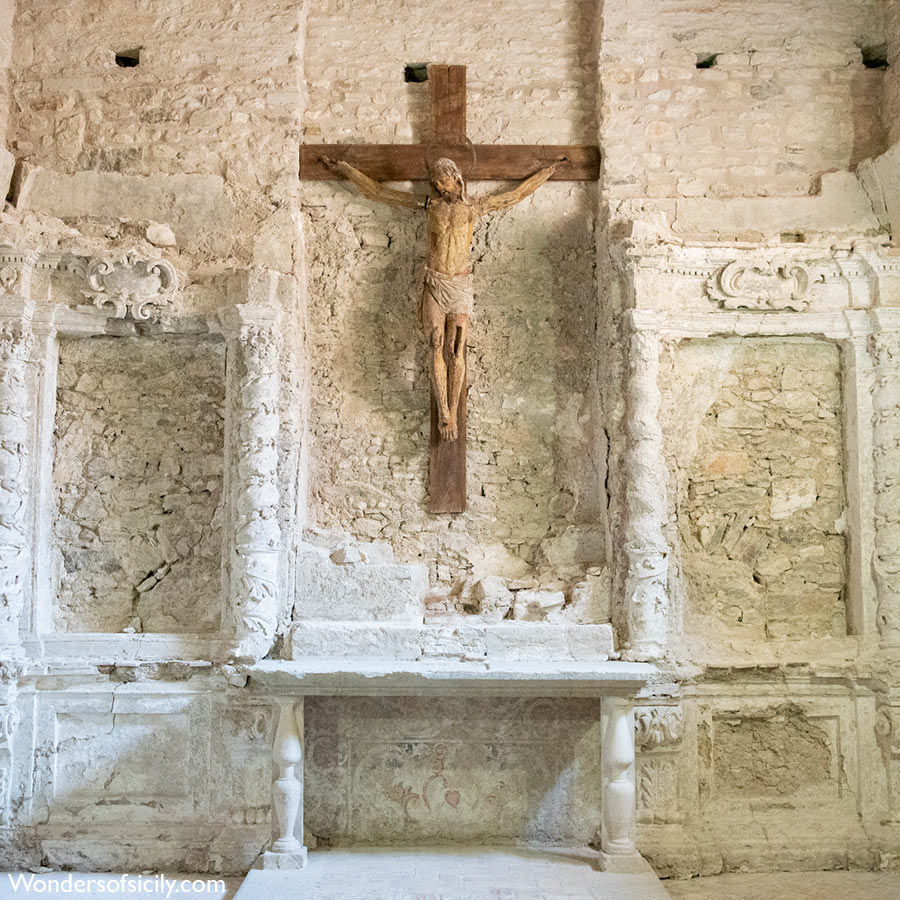
A chapel (?) with a crucifix in the deconsecrated church of San Giuliano (Chiesa parrocchiale di San Giuliano), 12th-17th century.
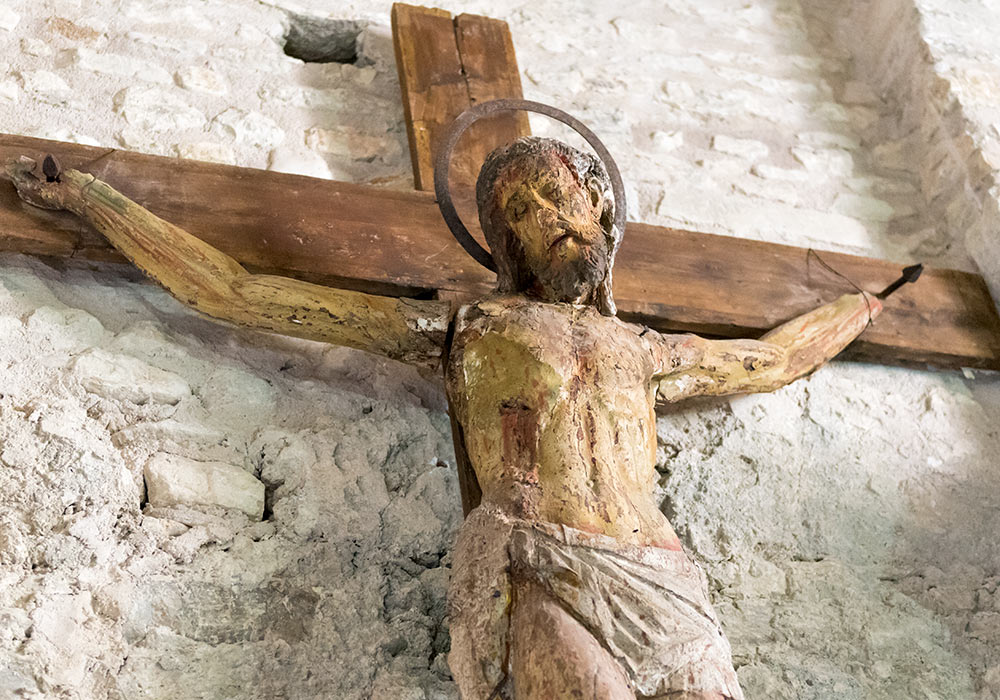
Crucifix (no date) in the deconsecrated church of San Giuliano.
See more Sicilian crucifixes here!
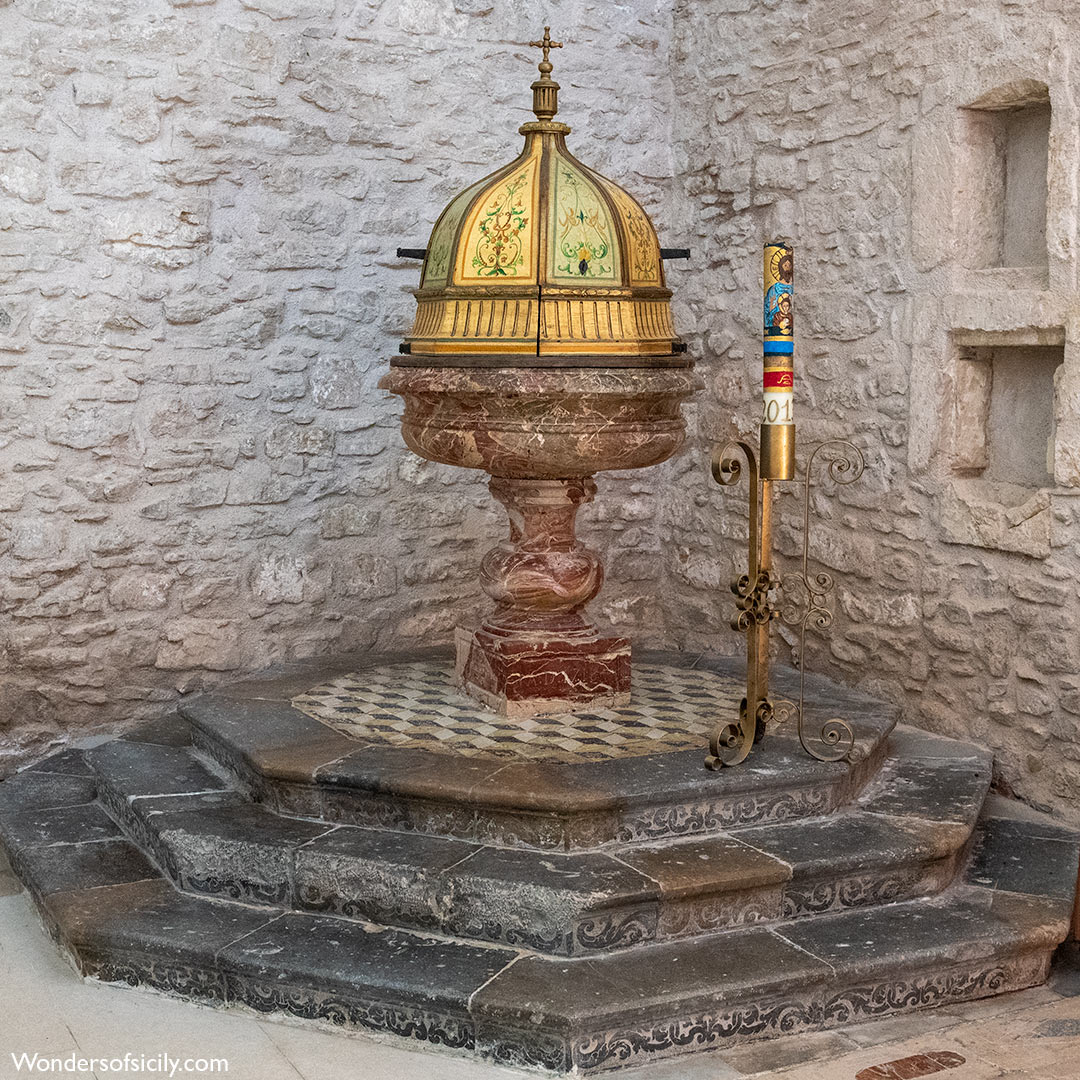
A beautiful baptismal font (uncertain date) in the deconsecrated church of San Giuliano, Erice, Sicily.
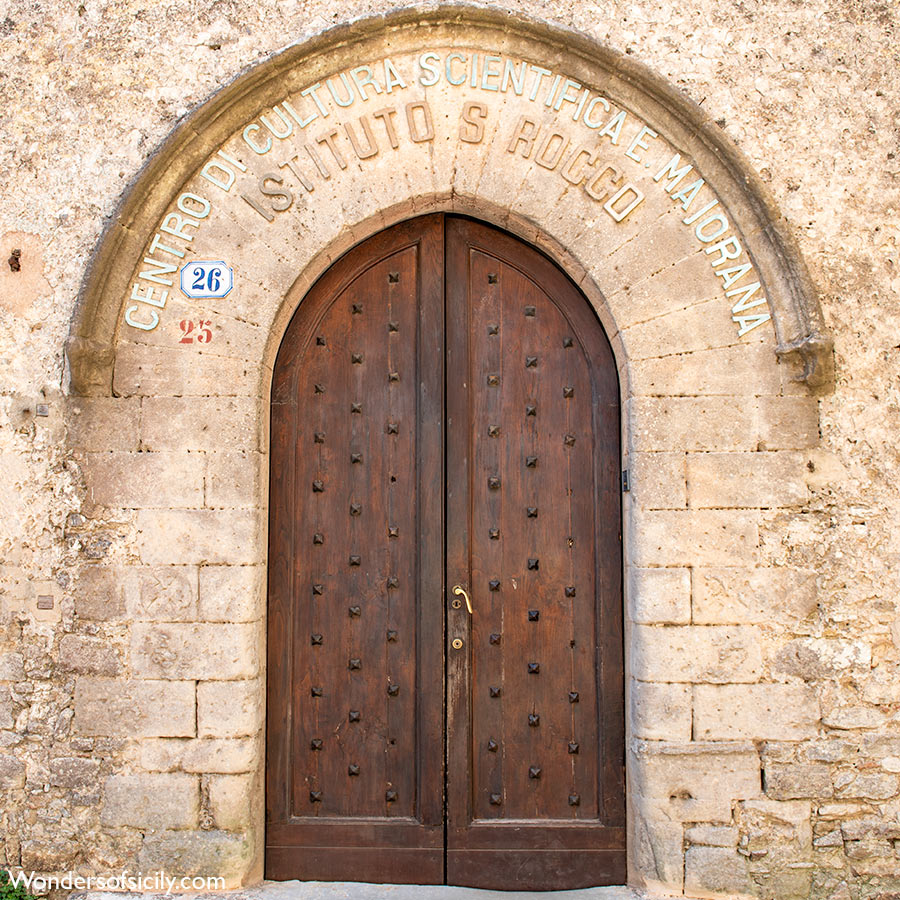
Ettore Majorana International Centre for Scientific Culture (Centro di Cultura Scientifica Ettore Majorana, Istututo San Rocco) was founded in 1963.
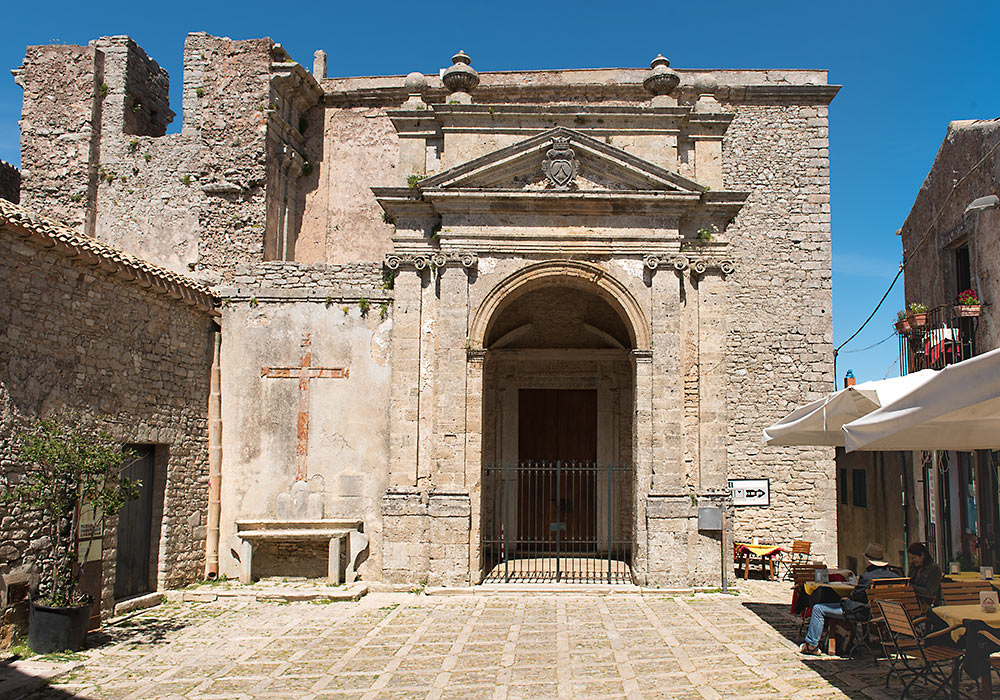
Church in Erice.
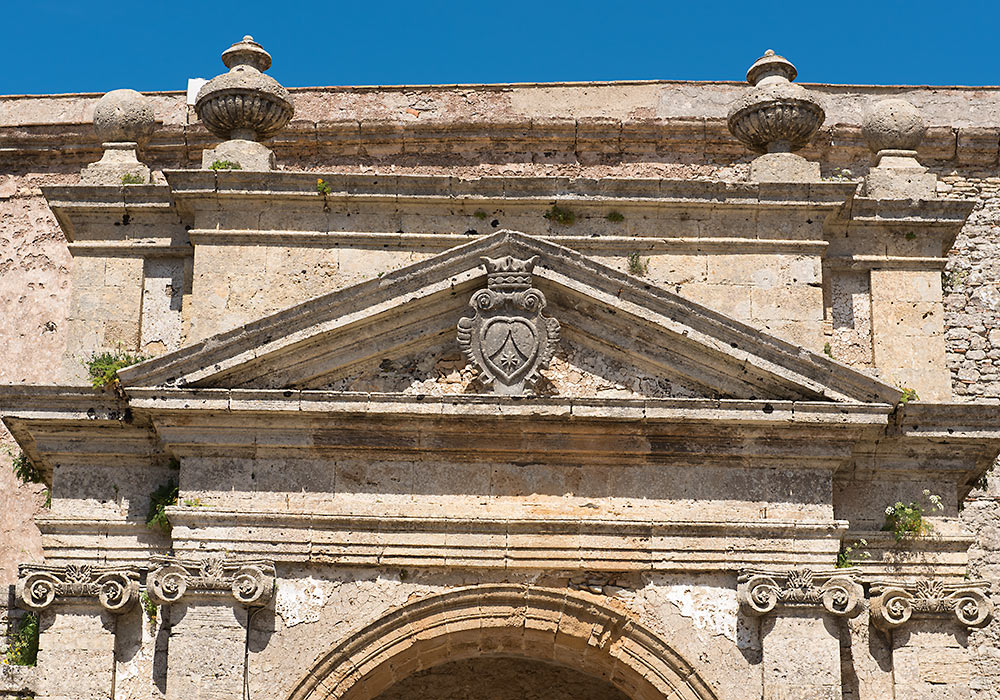
The crooked facade of a church in Erice.
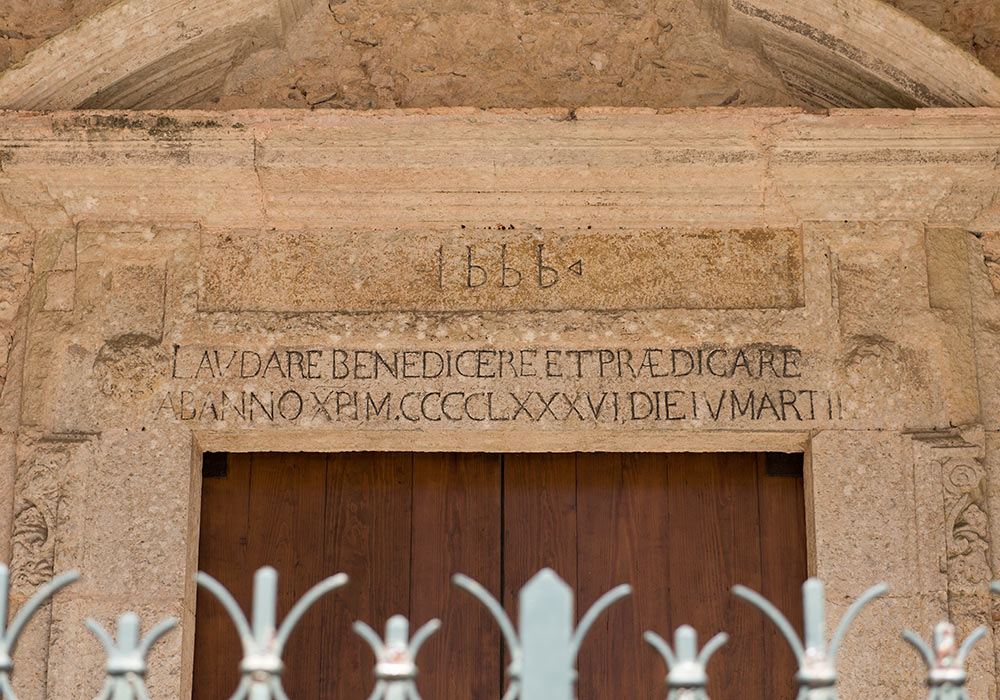
Church in Erice, Sicily. The text reads: “To praise, bless, and preach in the year of Christ 1486, on the 4th day of March” (‘Lavdare benedicere et prædicare abanno xpi mcccclxxx6 die iv martii’).
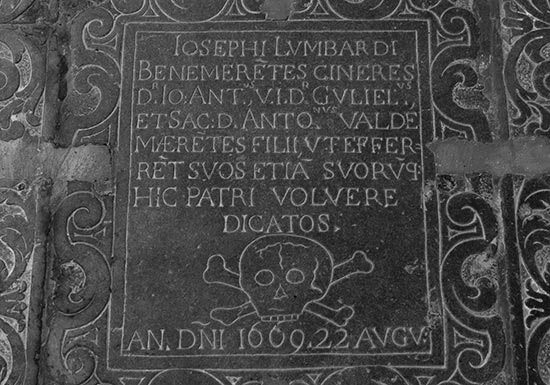
Tomb from 1669 in the church of Saint Julian (Chiesa di S Giuliano), originally built by the command of Roger II in 1075.
.
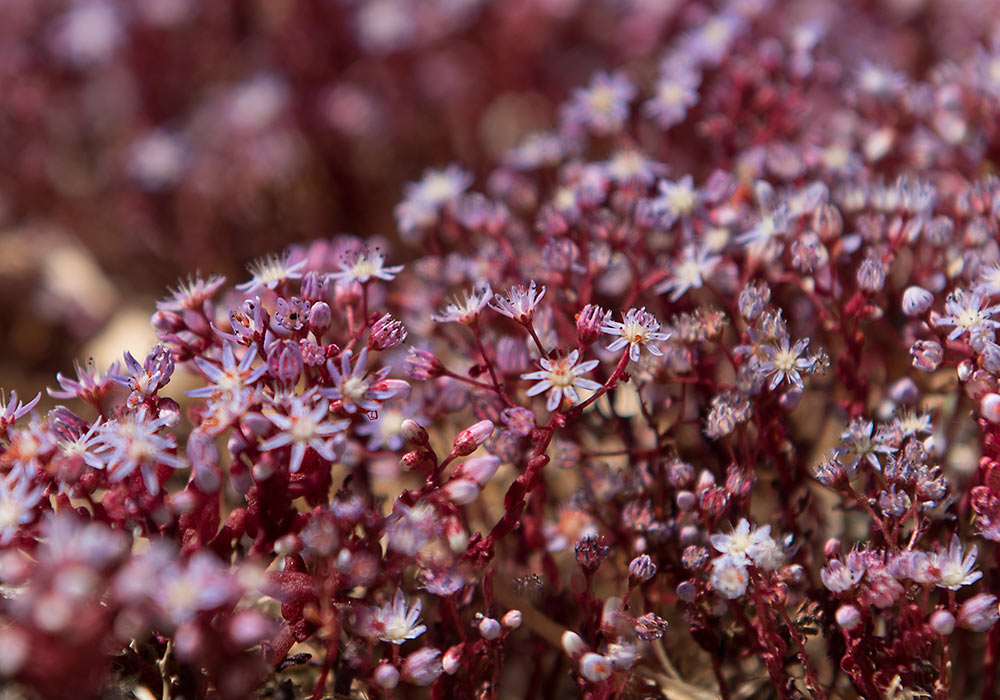
Beautiful, but tiny flowers at Castello di Venere, Erice.
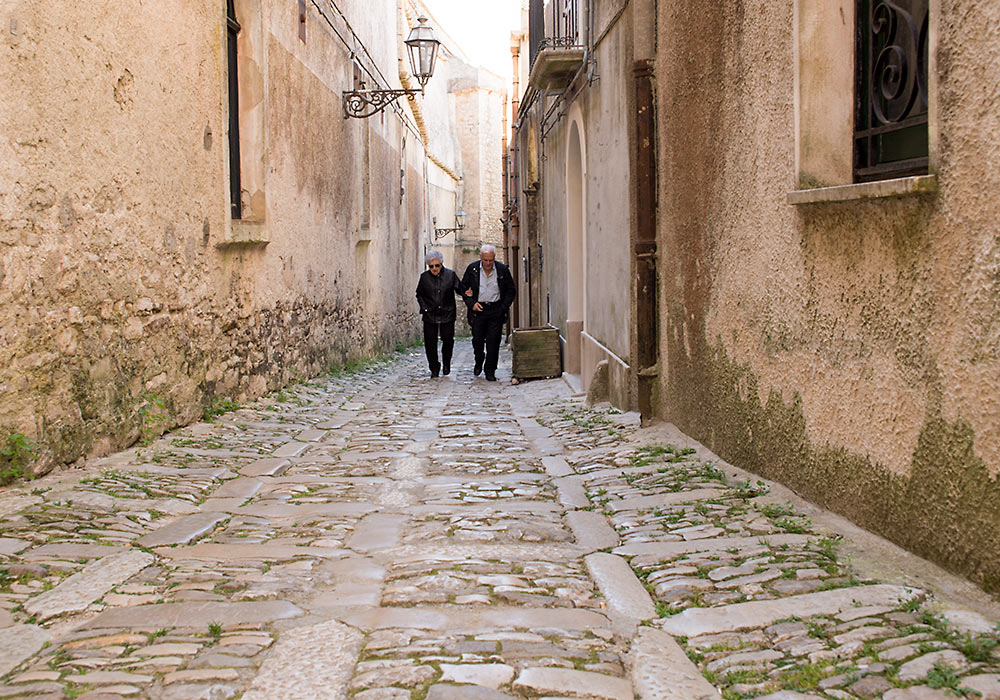
Although Erice town is small, the narrow cobbled streets and few piazzas makes it rather confusing to navigate through.
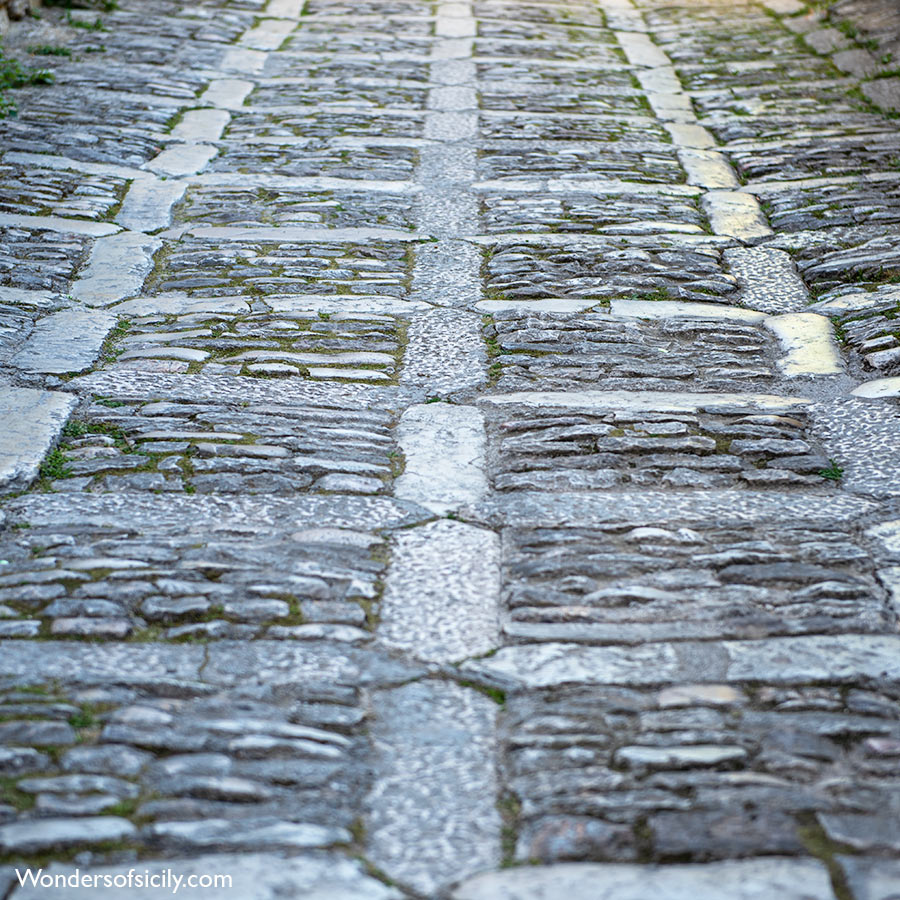
A cobbled street in Erice.
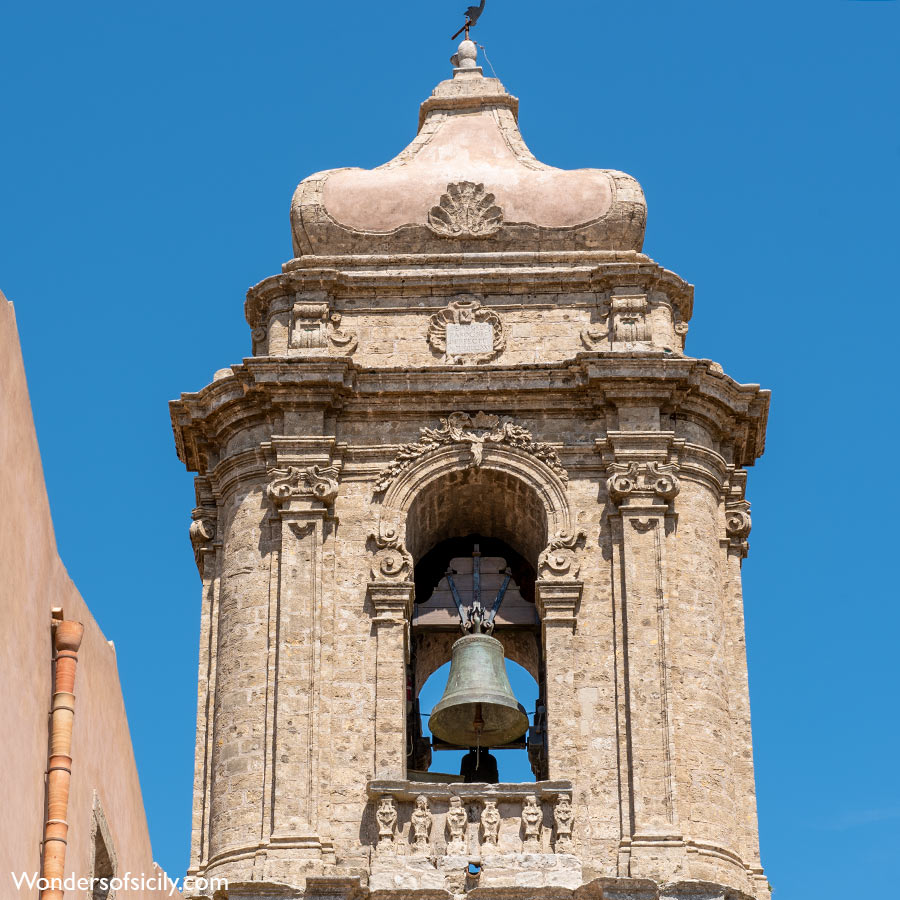
Baroque bell tower, anno 1781. Chiesa parrocchiale di San Giuliano (C12-C17).
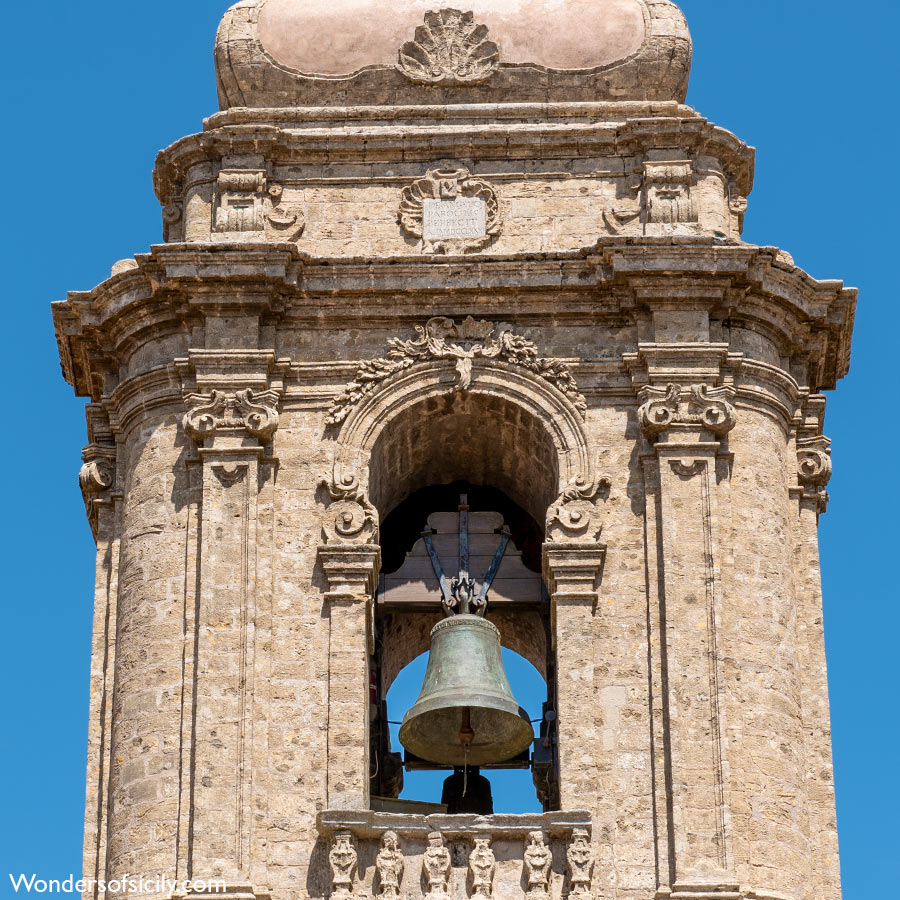
Close-up of the bell tower. Chiesa parrocchiale di San Giuliano (C12-C17).
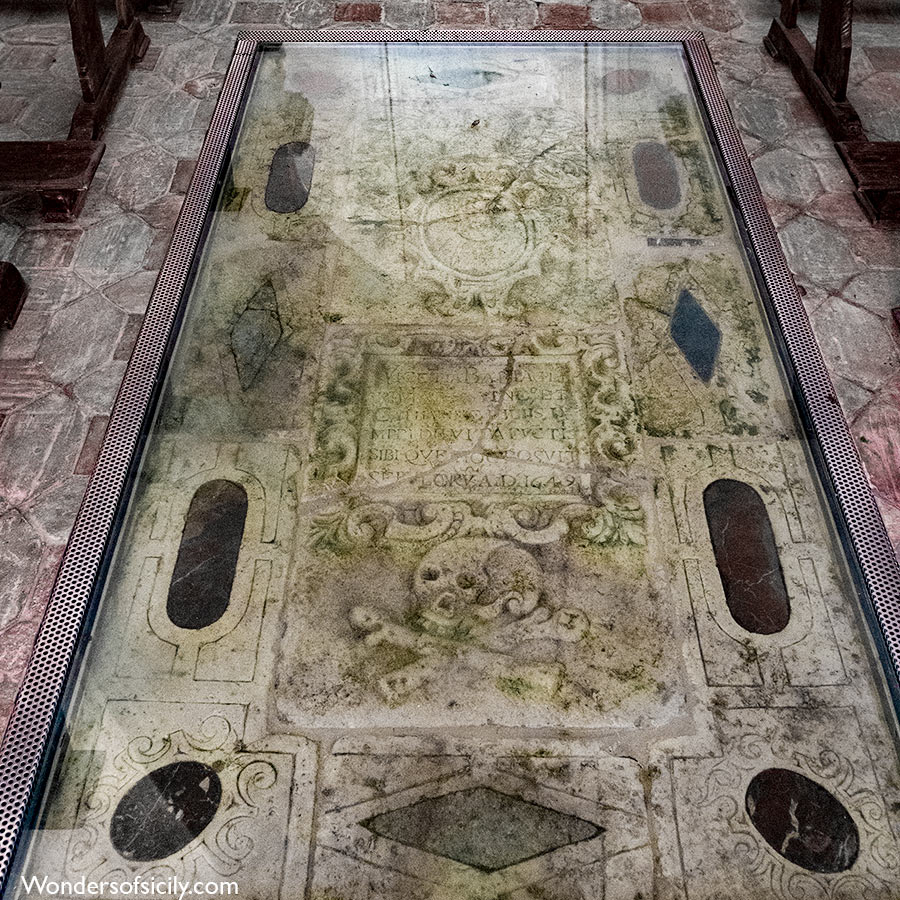
A grave monument in the floor, protected by glass, located in the Chiesa di Sant'Alberto dei Bianchi (15th–18th century). Especially in the 17th century, skulls were commonly featured on tombstones. In earlier times, it was possible to be buried inside the church itself. It was also not unusual to have tombs on the walls or floors. In some places, stone slabs used for sarcophagi in the cemetery were moved inside and repurposed as floor tiles in the church.
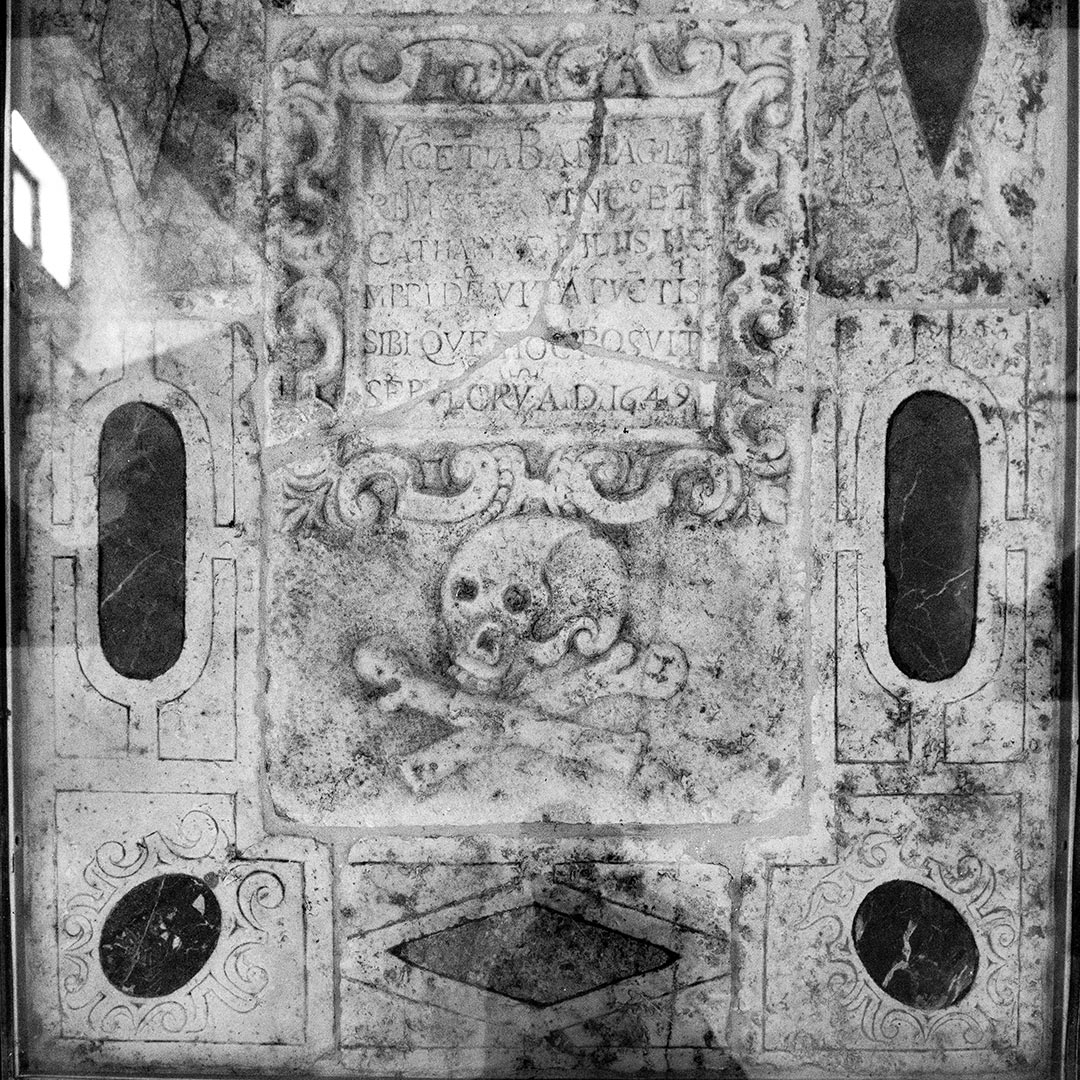
Close-up of a grave monument with skull and bones anno 1649 in Chiesa di Sant'Alberto dei Bianchi (C15-C18).
The sanctuary of Venus Erycina
The sanctuary of Venus Erycina, located on Mount Eryx in Sicily, holds significant historical and cultural importance. Worship of the goddess Aphrodite/Astarte/Venus at this site dates back to the 6th century BCE and continued until the 1st century CE. Despite its prominence in ancient times, detailed archaeological study of the sanctuary remains limited. Early research, such as excavations by G. Cultrera in 1930–1931, provided some insights but left many questions unanswered about the site's chronology, structures, and function. Recent investigations led by Dr. Chiara Blasetti Fantauzzi aim to deepen understanding of the sanctuary's development and its socio-historical context. Preliminary fieldwork in 2018 and 2021 revealed key findings, including Late Archaic and Roman phases, monumental walls, and stratigraphic evidence of continuous use. Discoveries such as Roman pottery, votive statuettes, and architectural remnants suggest the site's longstanding religious and cultural significance. Current research focuses on excavating previously unexplored areas, such as the thermal complex and the so-called Wall of Daidalos, to establish a clearer timeline and functional understanding of the sanctuary. The project emphasizes environmental and resource studies to explore the role of natural factors in the sanctuary's evolution.
“Erice - Uomini e Dei” – A video documentary by Jean Paul Barreaud

